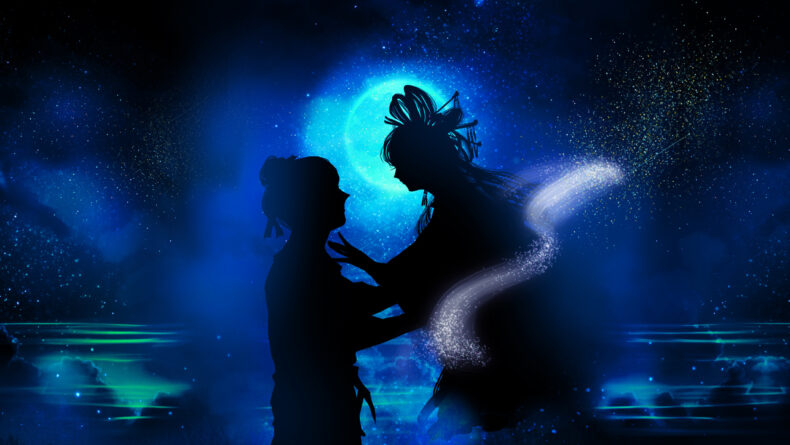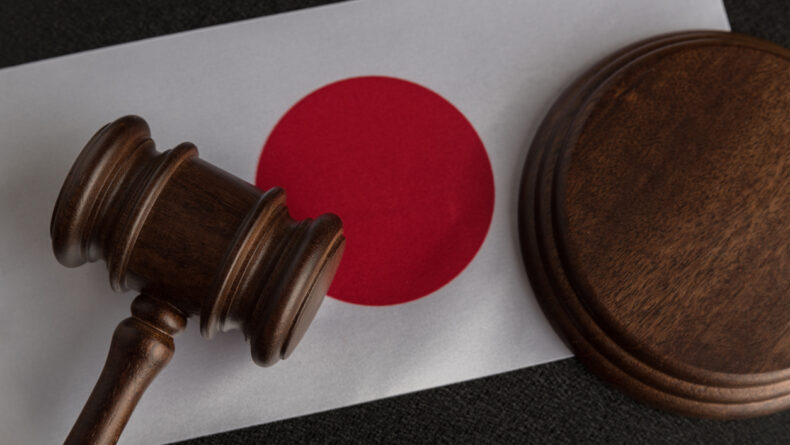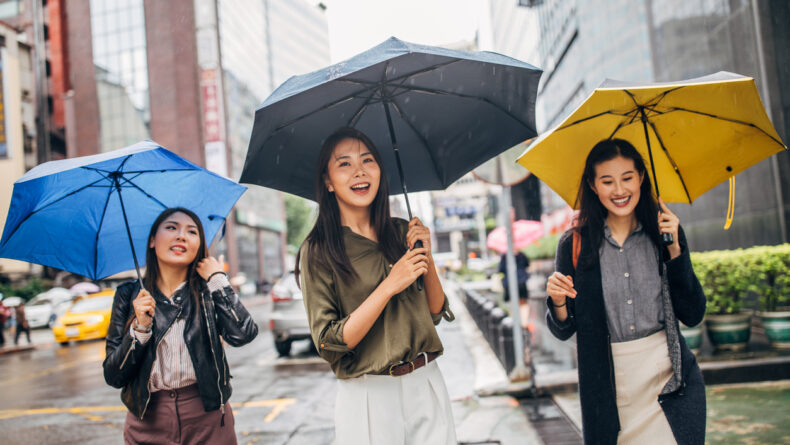Japanese Anti-Sexual Violence Ad, #ActiveBystander, Becomes Online Hit
Video Shows Bystanders How To Take Action
The privately made ad aims to enlist the help of onlookers to change Japan’s permissive approach to sexual violence toward women.
One of Japan’s most striking public awareness commercials was released last month, but you won’t see it on TV because it was not made by Advertising Council Japan. The #ActiveBystander campaign against sexual violence toward women was made by two Japanese women and is raking up views on social media and understanding among watchers.
The ad portrays six common cases of sexual harassment that women in Japan experience on a daily basis: upskirting on an escalator; a ‘butsukariya’ incident of a man intentionally banging into a woman’s chest as they pass each other on the street; groping by a cyclist; a persist on-street pickup attempt; a drug placed into a date’s drink; and a boss hugging and asking private questions of a female employee while out with co-workers on a company drinking event.
The opening shows a young man who sees the upskirting take place and then shows the other incidents from his point of view as a bystander, including him looking away because it’s all none of his business. The second half of the video shows the same man taking small actions, some of which stop or prevent the original incidents, some of which offer assistance to the victims.
For example, on the escalator, he steps closer to the upskirter, making him aware that someone can see what he is doing, and the upskirter puts away his smartphone. To the woman who has been knocked down by the butsukariya, he asks if she is OK.
The two halves of the video are connected by the phrase, ‘turning away creates a society in which it is easy for sexual violence to occur.’ The main actor ends by asking viewers directly,
What would you do if you were me?
Two million views in five days
The #ActiveBystander video was released on October 11 this year to coincide with the United Nations’ International Day of the Girl Child. In just the first five days after that, it was watched more than two million times on Twitter alone, Forbes Japan has reported. On YouTube, it has been viewed more than 82,000 times and the English-subtitled version has been watched more than 70,000 times.
The creators of the video say the overwhelming response to it from women has been to say that, yes, they have experienced exactly those incidents and are subjected to them on a daily basis. Men’s response, they say, is typically surprise that these acts are actually happening and are so prevalent. The most common comment directly from viewers themselves is that they want to see the video broadcast on TV.
(1) “Can I help prevent sexual harassment?”🧐⁉️
YES!! That’s called ‘Bystander Intervention’ and it’s something all of us can do 💪
‘Bystander Intervention’ is when someone present during an act of Sexual Harassment, but not directly involved, steps in to change the outcome. pic.twitter.com/f4C1JIqBmx
— All Women’s Action Society (AWAM) (@AWAMMalaysia) November 4, 2020
Taking action
The women behind #ActiveBystander are Shiori Onuki, a midwife and sex educator who runs a YouTube channel under the nickname Shioriinu, and a writer who uses the name Artesia.
Onuki has told The Huffington Post Japan that the idea for the video began when she read a column that Artesia wrote in August about a commercial (featured in the tweet below) made by Canada’s Ontario state government that similarly asks the bystanding viewer, will they assist the sexual attacker by staying silent, or take action to help the victim. Onuki contacted her friend right after reading this line that Artesia wrote: “Japanese police and railway companies, how about you make an ad like this? I’ll write the script for you for just \1,000.”
#WhoWillYouHelp? If you see something, speak up. https://t.co/QvjW1yXzde
— Kathleen Wynne (@Kathleen_Wynne) May 6, 2015
“When it comes to Japanese public awareness videos,” Onuki said, “most of them ask the victim to practice self-protection by, like, taking your earphones out when walking at night. But I thought that it’s not only the efforts of the victims, and that if more people nearby started taking action then it would surely create a society in which it is difficult to carry out sexual violence.”
Expanding awareness of sexual violence
Many viewers have praised the video for labeling the acts it shows as sexual violence. This is a key step in Japan, where non-confrontation is traditionally seen as virtuous and inappropriate incidents therefore often get downplayed and ignored. As YouTube user Momoko writes, “It was heartening that it was clearly labeled ‘sexual violence’. I think that not using a vague expression and labeling all those actions as the violence will help people understand.”
Fellow YouTube watcher Ringo made a similar point, saying that it was only a few years ago, when she joined the workforce, that she began to see incidents like those in the video as not just unpleasant experiences but as sexual violence. “I think that even I, a victim, was creating a society that is permissive of sex crimes. This video gives hope that the number of victims will fall as society treats these acts as crimes that—even though they may be difficult to see—do exist.”
View this post on Instagram
Many viewers have predicted that the video will raise men’s awareness of the frequency and nature of such sexual attacks on women. As Marushikaku writes on YouTube, “I think this video is great at giving men, who aren’t usually subjected to sexual violence, an image of what sexual violence looks like. If you’ve never been subjected to sexual violence then you don’t know what it’s like and if you don’t know that, then you can’t become aware of it, and if you’re not aware of it, then you can’t offer help.”
Small actions are better than none
In a recent regular column, Artesia wrote about various comments she has received about the video and notes that some people have criticized it for not encouraging actions that would lead to the arrest of the attacker.
Of course, she writes, it is best to call the police over crimes like upskirting and assaults, but many people are not capable of doing that, or of confronting the perpetrator face on. “Even if it’s not the best action, by taking a small action that you are able to take, you can help the victim,” she wrote.
‘turning away creates a society in which it is easy for sexual violence to occur.’
Asking the victim after the incident if they are OK at least tells them that someone does care and will assist them, and helps prevent them from losing faith in society, Artesia says. She shares a comment from a female viewer of the video who said that not only has she been groped and had many of the other incidents from the video happen to her, but that, on top of that, she has also been hurt by those around who had pretended they hadn’t seen anything.
Artesia hopes that by giving viewers easy examples of things they can do to help victims of sexual violence, that they will take action and that society will change.
















Leave a Reply